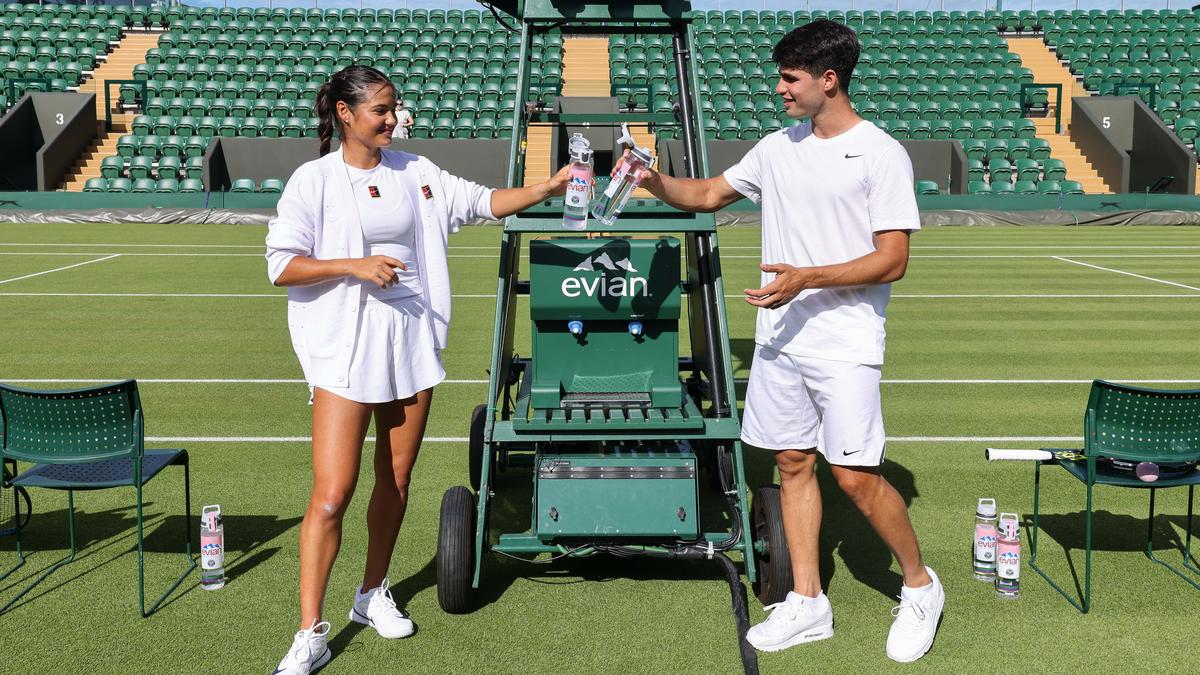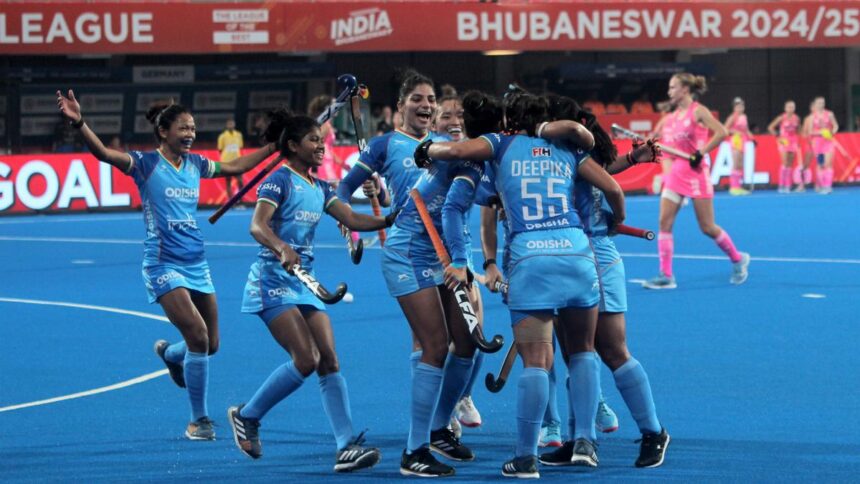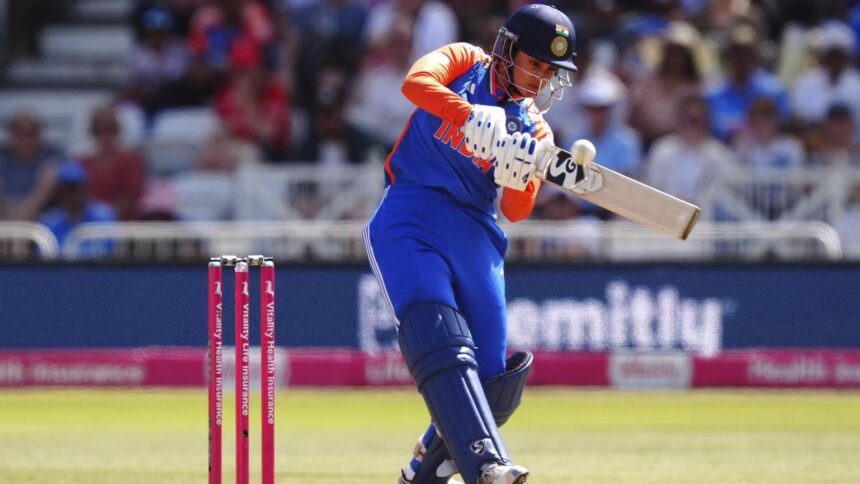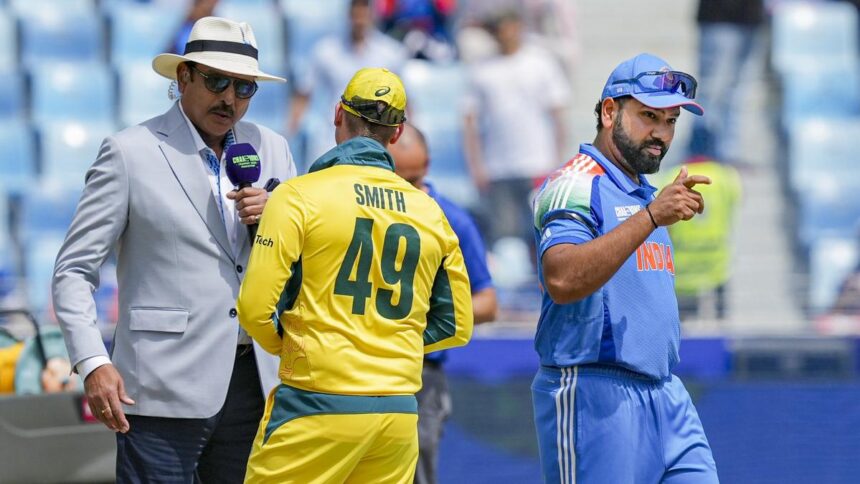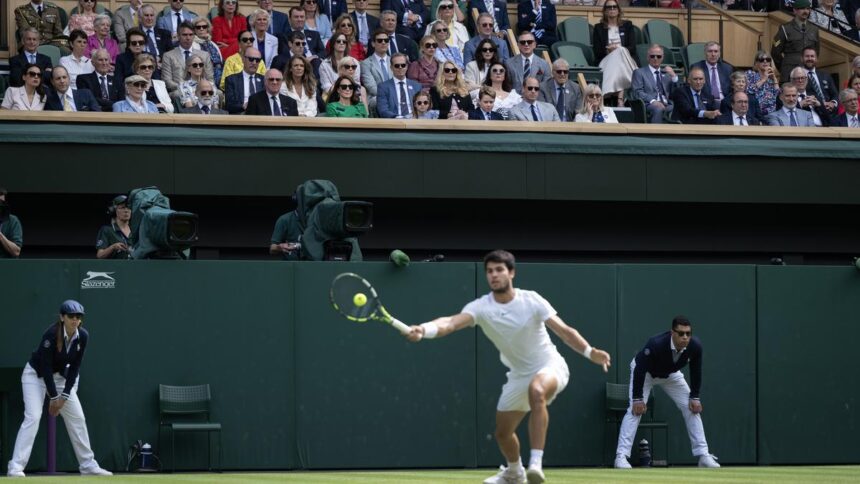
Fans would be delighted at the prospect of Emma Raducanu and Carlos Alcaraz sharing the same court-space in the US Open
| Photo Credit: Getty Images
Non-conformity is a quintessential US Open trait. From being the first to introduce a final-set tiebreak way back in 1970 to allowing in-game coaching in 2022, the season’s last tennis Major has defied tradition multiple times.
Tuesday, however, will see arguably the most radical and controversial of transformations, with a new mixed doubles format ready to be showcased. It will feature only 16 teams — eight direct acceptances and eight wild cards — down from 32, and players have been allowed to enter only with their singles ranking.
The two-day affair is being played in the week preceding the Slam and will witness reduced sets (to four games, except in the final). The who’s who of singles tennis, from Carlos Alcaraz to Jannik Sinner to Iga Swiatek to Naomi Osaka, will compete without having to worry about doubles burning their singles ambitions.
Creating a buzz
For the United States Tennis Association (USTA), it is about creating a buzz around a format that doesn’t exist outside the Slams and quadrennial extravaganzas like the Olympics. It can help schedule matches on the biggest show-courts such as the Arthur Ashe Stadium, sell tickets, beam the action on primetime television and collect more in sponsorships.
But the change has left the doubles stars disappointed. “As a doubles athlete, my heart is bleeding,” said Wimbledon champion Sam Verbeek, and one can see why.
Already competing for a fraction of the prize money, doubles specialists have had the door shut on their faces. None among the ATP doubles top-10 is in the draw. Nine of them had taken part in the 2025 Wimbledon mixed doubles competition.
The women fare better, with three of the WTA doubles top-10 set to compete. But the current World No. 1 is United States’ Taylor Townsend and to not have her would have been a public relations disaster.
Thus, the nearly three-fold increase in purse from $802,000 in 2024 to $2,360,000 will mostly be pocketed by the already highly paid singles stars.
“Doubles already plays second fiddle to singles in terms of visibility, scheduling, prize money. This move just reinforces that hierarchy,” former World No. 1 Rohan Bopanna told The Hindu.
“A Grand Slam isn’t just about singles. It’s about the entire ecosystem. When you start trimming one part, especially something that’s been a tradition, it chips away at the completeness of the event.”
Unilateral decision-making
What has also rankled the players is the USTA’s seemingly unilateral decision-making. “I’m honoured that they asked me to play, but how they went about it wasn’t really great,” quipped Jessica Pegula, World No. 4 in singles and a WTA Player Council member, in Cincinnati recently.
“We were like, ‘you guys (US Open) just went rogue and changed the format and didn’t tell anybody’,” the American added.
The competition is also running concurrently with an ATP 250 in Winston-Salem (USA) and it is no-brainer as to who will enjoy the most coverage.
At a time when seven of nine ATP Masters 1000s — except Monte Carlo and Paris — have ballooned into 12-day snooze-fests, elbowing out smaller tournaments, US Open’s move doesn’t inspire confidence. Can a global sport further allow the shrinking of its footprint?
Published – August 18, 2025 08:50 pm IST








